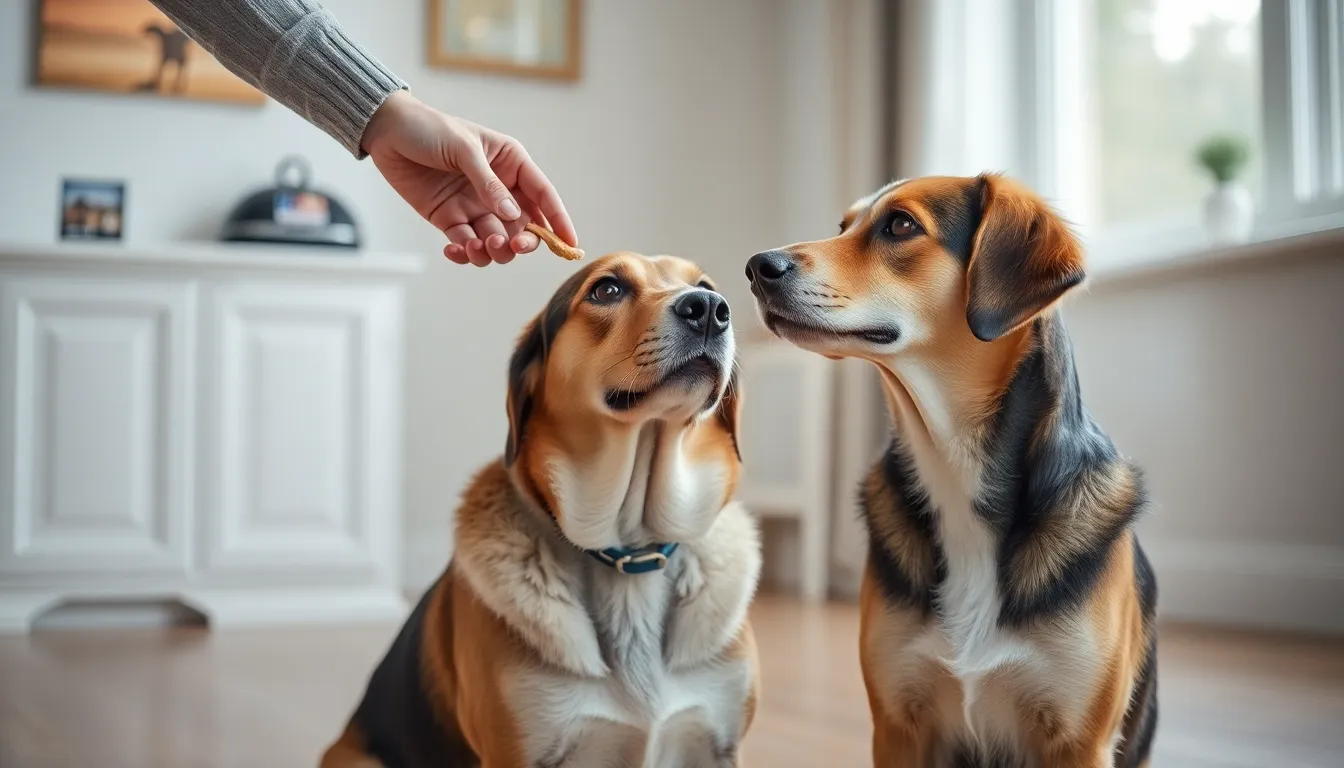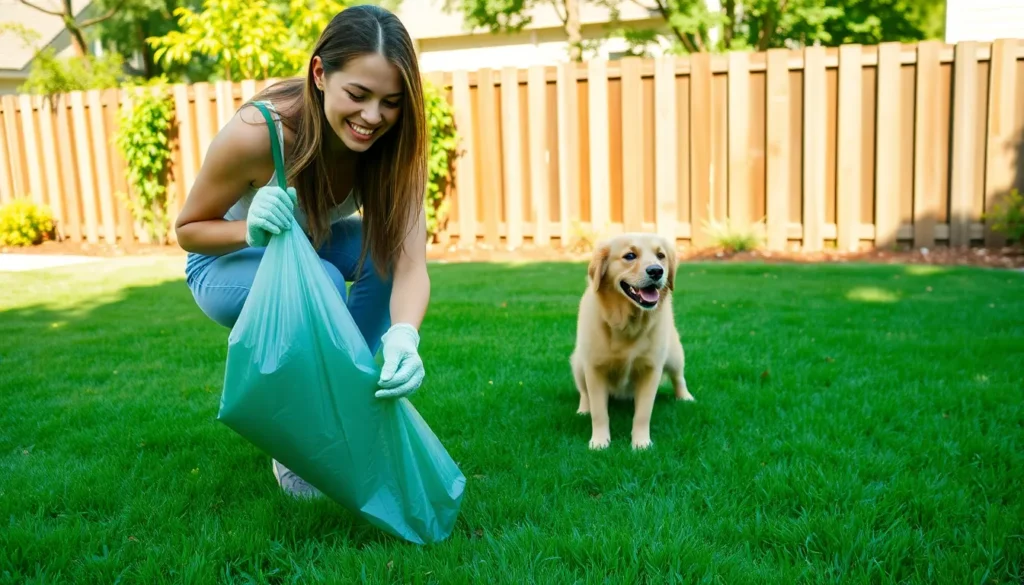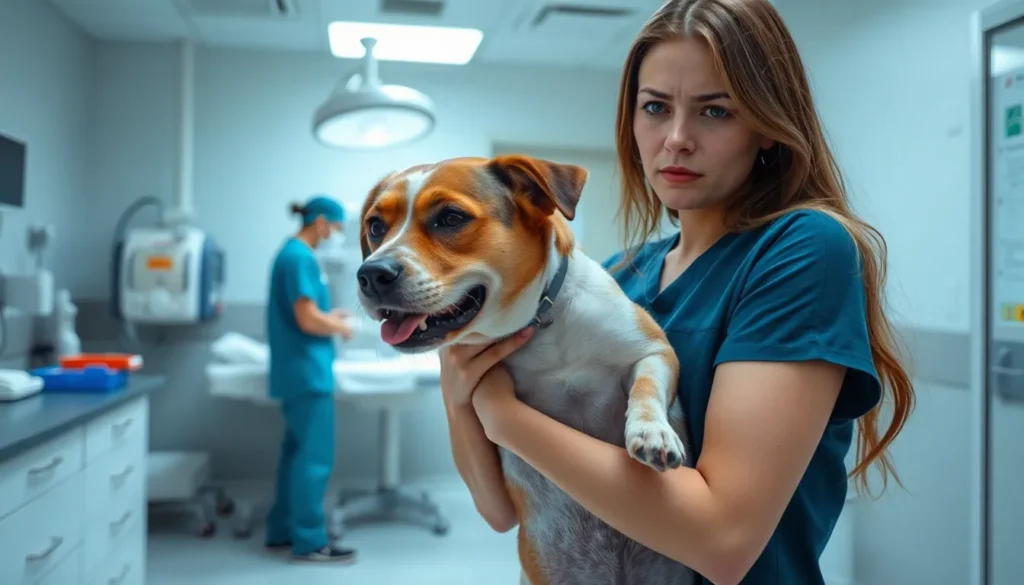Anxiety in pets is more common than many owners realize. Whether it’s fear of loud noises, separation anxiety, or unfamiliar environments, anxious pets can struggle to cope, leading to behaviors that may disrupt their lives and their owners’. Understanding the root of these fears is crucial for effective training.
Training anxious pets requires patience and a tailored approach. By employing positive reinforcement techniques and creating a safe environment, owners can help their furry friends build confidence and reduce anxiety. With the right strategies, it’s possible to transform an anxious pet into a more relaxed and happy companion.
Table of Contents
ToggleUnderstanding Anxious Pets
Recognizing anxiety in pets is crucial for effective training. Various signs often indicate underlying stress, and multiple factors can contribute to anxiety levels.
Common Signs of Anxiety
- Excessive barking: Anxious pets may vocalize more than usual when feeling threatened or scared.
- Pacing: Dogs and cats often exhibit repetitive movements when they’re anxious.
- Hiding: Seeking shelter under furniture or in corners is a common behavior in anxious pets.
- Destructive behavior: Chewing, scratching, or digging often stems from anxiety.
- Changes in appetite: Anxious pets may eat less or exhibit sudden changes in eating habits.
Factors Contributing to Anxiety
- Environmental changes: Moving to a new home or rearranging furniture can create stress for pets.
- Loud noises: Thunderstorms, fireworks, and other loud sounds frequently trigger anxiety.
- Separation from owner: Pets may experience distress when left alone for extended periods.
- Lack of socialization: Limited exposure to new people, pets, or environments increases anxiety.
- Medical issues: Ongoing health problems or pain can exacerbate anxious behaviors.
Effective Techniques for Training Anxious Pets

Anxious pets respond well to specific training techniques that enhance their confidence. Implementing methods like positive reinforcement and gradual desensitization plays a crucial role in reducing anxiety.
Positive Reinforcement
Positive reinforcement strengthens desired behaviors through rewards. This technique involves offering treats, praise, or playtime whenever the pet displays calm behavior in stressful situations. Reinforcements can also include verbal affirmations and gentle petting. Consistency is key; owners must apply the same cues and rewards each time the pet behaves positively. Gradually, pets associate previously anxiety-inducing scenarios with positive outcomes, leading to reduced fear responses.
Gradual Desensitization
Gradual desensitization exposes pets to anxiety triggers in controlled ways, minimizing fear responses. Owners should identify specific triggers, such as loud noises or unfamiliar environments. They can then introduce these triggers slowly while keeping the pet at a safe distance, gradually decreasing this distance over time. Providing treats and praise during each exposure helps create positive associations. It’s crucial to monitor the pet’s behavior throughout the process, ensuring they remain relaxed and receptive. This method allows pets to adapt progressively, fostering confidence in challenging situations.
Creating a Safe Environment
Creating a safe environment is essential for helping anxious pets feel secure. This environment offers pets a sense of stability, allowing them to thrive despite their fears.
Establishing a Routine
Establishing a routine helps anxious pets anticipate daily activities. Consistency in feeding, walking, and playtime reduces uncertainty, fostering a feeling of safety. Scheduled activities at the same times each day create a structured atmosphere. Engaging in regular training sessions, combined with exercise, reinforces predictability. Implementing a routine benefits pets by building confidence.
Utilizing Comfort Items
Utilizing comfort items can significantly reduce anxiety in pets. Providing familiar objects, such as toys, blankets, or bedding, creates a sense of security. These items carry the pet’s scent, which can help ease anxiety during stressful situations. Incorporating items like calming collars or pheromone diffusers may also promote relaxation. Regularly offering these comfort items and ensuring their accessibility aids in managing anxious behaviors.
Working with Professionals
Seeking professional help can significantly enhance training efforts for anxious pets. Professionals provide valuable insights and structured approaches tailored to each pet’s needs.
When to Seek Help
Owners should consider consulting professionals when their pet exhibits persistent anxiety despite implementing home-based strategies. Signs that indicate the need for expert intervention include severe behavior issues, such as aggressive reactions, continuous panic attacks, or avoidance of normal activities. If basic training techniques do not yield improvements, engaging a professional can help address underlying issues and establish effective coping mechanisms.
Types of Professionals to Consider
- Veterinarians: Veterinarians assess medical conditions that may contribute to anxiety. They can recommend treatment plans or prescribe medication when necessary.
- Certified Dog Trainers: Certified trainers specialize in behavior modification using proven techniques. They create personalized training plans that focus on positive reinforcement and desensitization.
- Animal Behaviorists: Behaviorists analyze a pet’s behavior comprehensively, identifying triggers and developing behavior change strategies. They provide specialized guidance based on the latest research in animal behavior.
- Pet Therapists: Pet therapists offer programs designed to address emotional and psychological challenges through therapeutic activities. They focus on building the pet’s confidence and resilience.
- Veterinary Behaviorists: This specialized group combines veterinary knowledge with behavior expertise. They offer advanced intervention plans, often integrating medical treatment with behavioral therapy.
Training anxious pets requires a thoughtful and compassionate approach. By understanding their triggers and recognizing signs of anxiety, owners can implement effective strategies that promote confidence and security. Consistency in training and the use of positive reinforcement are essential in building trust and reducing fear responses.
Creating a safe environment and establishing a routine further enhance a pet’s sense of stability. For those facing persistent anxiety issues, seeking professional guidance can provide valuable insights and tailored solutions. With patience and dedication, owners can help their anxious pets thrive and enjoy a happier, more relaxed life.








